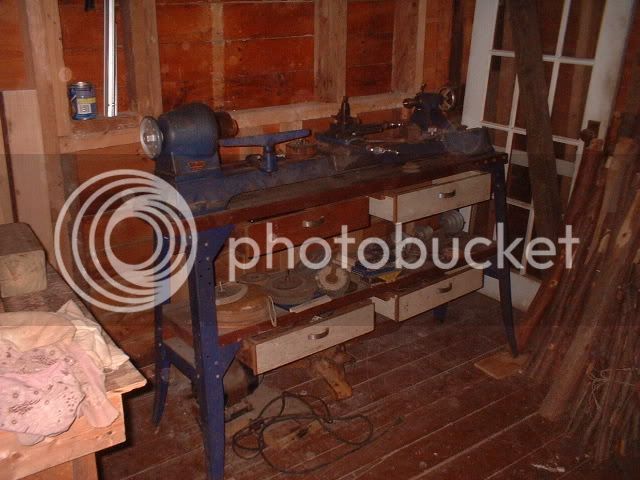AndyR
ArboristSite Operative
Nothing fancy - and cheating a little
I picked up this wood lathe of questionable quality on craigslist a week or so ago and made the stand last weekend. The idea for the stand constuction came from the web somewhere, and I have to say for around $30.00 it's pretty sturdy. I say it's not that high of quality but for my uses it works fine.
I turned this handle for a bailey #4 that I'm refurbishing from a hunk of Osage Orange that I found along the side of the road (in a hedgerow). It was mostly dried out as it had pobably been there a year or so and has been drying inside for a while now. I really like this wood! When I get the milling stuff set up I think thats probably going to be one of my favorites.
I've been watching this thread for a while and all of the work here is impressive. I'm sort of a beginner.
Thanks for all the inspiration.
Now to find some old socket chisels in need of newly turned handles...
Andy
I picked up this wood lathe of questionable quality on craigslist a week or so ago and made the stand last weekend. The idea for the stand constuction came from the web somewhere, and I have to say for around $30.00 it's pretty sturdy. I say it's not that high of quality but for my uses it works fine.
I turned this handle for a bailey #4 that I'm refurbishing from a hunk of Osage Orange that I found along the side of the road (in a hedgerow). It was mostly dried out as it had pobably been there a year or so and has been drying inside for a while now. I really like this wood! When I get the milling stuff set up I think thats probably going to be one of my favorites.
I've been watching this thread for a while and all of the work here is impressive. I'm sort of a beginner.
Thanks for all the inspiration.
Now to find some old socket chisels in need of newly turned handles...
Andy










































































